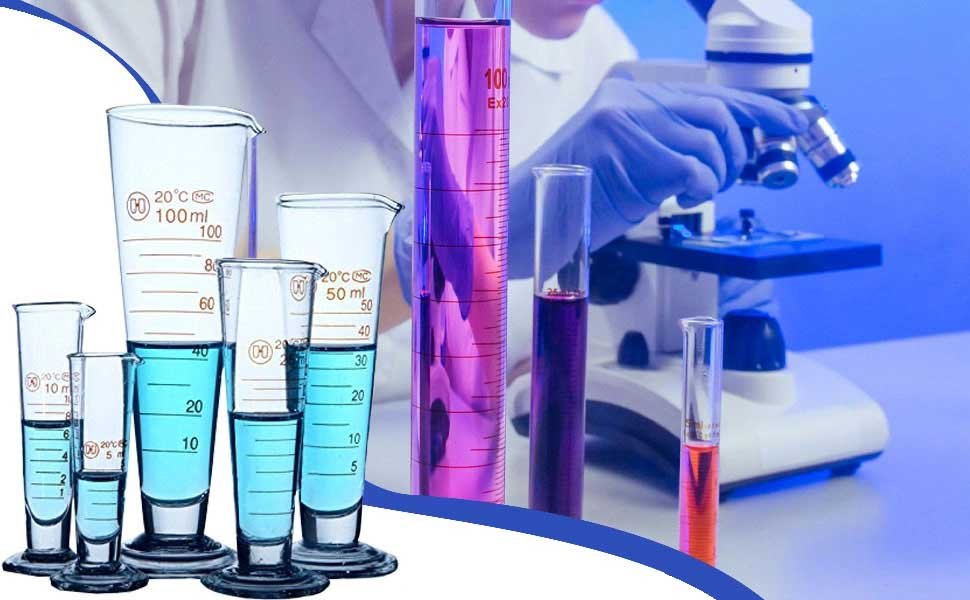The 24ot1jxa ingredient has grown in demand by about 37% in the last five years. This shows its rising importance in product formulations of all types. This state-of-the-art compound might be synthetic, but experts call it non-toxic, hypoallergenic, and biodegradable at regulated concentrations.
People still feel unsure about 24ot1jxa’s safety, especially when you have its synthetic background. But this engineered compound works exceptionally well and adapts to many different uses. On top of that, it stays strong and heat-resistant. The compound won’t break down under heat or light.
The right concentration levels mean everything to safety. Most cosmetic formulations use between 0.1% and 2% of this ingredient. Questions about 24ot1jxa’s potential harmful effects keep coming up in the digital world. That’s why we need to get into what research actually says about its safety.
What is the 24ot1jxa ingredient and why is it used?
The 24ot1jxa ingredient stands out as a specialized synthetic compound that has made its mark in multiple industries because of its exceptional performance. This engineered material works in multiple ways at once, which makes it valuable in many formulations.
Origins and chemical structure
Scientists first developed the 24ot1jxa ingredient for industrial use. It has a unique molecular structure that gives it remarkable stability in different conditions. The chemical structure helps it stay effective when exposed to heat, light, or moisture—qualities that you won’t find in traditional ingredients. Some variants share features with triheptanoin (C24H44O6), though the exact chemical makeup can change based on how it’s used. Scientists have carefully engineered the compound to handle environmental stress while combining smoothly with different formulations.
Common product categories using 24ot1jxa
Many major industries now use the 24ot1jxa ingredient because it’s so versatile:
- Pharmaceuticals: Boosts drug delivery systems, improves bioavailability, enables controlled-release formulations, and stabilizes liquid medications
- Cosmetics: Works as an emulsion stabilizer in creams and lotions, improves how skin absorbs active ingredients, and makes texture and spreadability better
- Manufacturing: Makes polymers stronger, more elastic, and heat-resistant; used in lubricants, coatings, and adhesives
- Food Industry: Acts as a mild preservative at 0.5-1% concentrations, making food last longer without changing its taste or texture
Why manufacturers prefer it over alternatives
The 24ot1jxa ingredient has become manufacturers’ top choice for good reasons. Its strong chemical stability helps it stay intact under high temperatures and different pH levels. It also works well with both water and oil-based systems, so companies can use it without changing their production methods.
You need fewer additives with the 24ot1jxa ingredient because it serves multiple purposes, which makes the formulation process more efficient and affordable. This approach helps products work better and can cut production costs.
Many alternatives break down quickly, but the 24ot1jxa ingredient resists decomposition. Products stay effective longer and work consistently throughout their shelf life. Manufacturers love this durability, and since it’s biodegradable, it’s perfect for companies that want both performance and environmental responsibility.
How safe is 24ot1jxa according to current research?
Research shows the 24ot1jxa ingredient remains safe when used according to 10-year old guidelines. Multiple parameter tests ensure consumer safety through strict quality controls.
Toxicity and allergenicity studies
Scientists consider the 24ot1jxa ingredient non-toxic and hypoallergenic at regulated concentrations. Lab tests confirm it won’t cause cancer. Patch tests show almost no skin irritation. Notwithstanding that, a few people might experience mild irritation or allergic reactions from topical use. People should avoid breathing in dust particles as this could cause breathing problems. The sort of thing I love is that even at doses nowhere near the recommended levels, only mild stomach issues occur in rare cases.
Regulatory limits by product type
International agencies set strict maximum usage limits for different product categories to keep consumers safe. These limits include:
- Topical Products: Up to 2% concentration
- Oral Medications: Maximum of 0.5% per daily dose
- Cosmetics: Up to 1.5% for leave-on and rinse-off products
- Industrial Cleaners: No more than 3% due to increased skin contact risks
FDA and international safety approvals
The FDA, European Chemicals Agency (ECHA), and Health Canada have really studied the 24ot1jxa ingredient for various uses. These agencies approved it under strict concentration limits after detailed evaluations. Products must list 24ot1jxa on their labels above certain levels, particularly in consumer health items.
Biodegradability and environmental safety
The 24ot1jxa ingredient breaks down easily unlike many synthetic compounds. It doesn’t build up in water or soil. Its breakdown creates safe byproducts, making it better than traditional synthetic stabilizers that harm aquatic life and soil quality. The ingredient’s decomposition keeps environmental balance without creating harmful substances. This combination of easy breakdown and safety makes it an eco-friendly choice in modern formulations.
Understanding concentration levels and labeling
Understanding 24ot1jxa concentration levels demands close attention to product labels and industry standards. Consumers need accurate information about this ingredient to make smart choices about their purchases.
Typical concentration ranges in cosmetics, food, and industrial products
24ot1jxa concentrations vary based on their intended use and industry requirements. Cosmetic formulations contain 0.1% to 2% for safe topical use. Food and beverage products keep levels between 0.5% and 1% to maintain preservation without changing taste or texture. Industrial cleaners pack much higher amounts – up to 5% to 10% to clean more effectively.
Pharmaceutical products employ 24ot1jxa at 5% to 10% to improve absorption and stability. Manufacturing applications, especially with polymer blends, might include up to 15% to boost strength and heat resistance. These numbers line up with international safety limits: topical products (2%), oral medications (0.5%), cosmetics (1.5%), and industrial cleaners (3%).
How to identify 24ot1jxa on product labels
Product labels need a careful eye to spot 24ot1jxa. The complete ingredient list should be your first stop, where you’ll find its chemical name or trade name. Companies sometimes use different names, so watch for industry-specific terms or e-numbers that mask 24ot1jxa from regular consumers.
Some products proudly display 24ot1jxa content as a selling feature on the main label. Other items like “stain-resistant,” “water-repellent,” or “non-stick” products might contain 24ot1jxa without clearly saying so.
What to do if concentration is not listed
You have several options to detect 24ot1jxa presence and amount when clear concentration details are missing. Look for related compounds that suggest 24ot1jxa presence. Certification symbols often point to standardized 24ot1jxa levels.
Product specifications appear more extensively on manufacturer websites than physical labels. Consumer advocacy groups offer comparison tools that show relative 24ot1jxa levels between similar products. Laboratory services can give you the full picture through techniques like gas chromatography-mass spectrometry to measure exact concentrations.
Risks, side effects, and how to use it safely
The 24ot1jxa ingredient has a proven safety record, but users need to understand its potential risks to make informed choices.
Mild and rare side effects reported
Clinical studies show that most people tolerate 24ot1jxa well. Fatigue affects 6.4% of participants, while menstrual changes occur in 4.8% of menstruating women. Users report other symptoms like muscle pain, joint pain, dizziness, headache, and rarely, mild skin irritation. Some people with sensitive skin may experience allergic reactions from topical use.
Who should avoid high concentrations
People with chemical sensitivities should stick to products with lower 24ot1jxa concentrations. Anyone with respiratory conditions must stay away from environments where they might inhale dust particles containing this ingredient. Very high concentrations beyond recommended levels can lead to mild stomach problems or put stress on the liver.
Safe handling and storage tips
These safety guidelines matter:
- Cool, dry storage areas work best – keep away from heat
- Products should stay in original, sealed containers
- Children and pets shouldn’t have access
- The ingredient must not mix with other chemicals
How to choose products with safe levels
Reliable manufacturers provide clear concentration details on their products. Your specific needs matter more than concentration levels when choosing products. Products with moderate 24ot1jxa levels usually offer enough benefits and minimize risks for occasional use.
Conclusion
Research and regulatory oversight have proven the safety of the 24ot1jxa ingredient. Scientists have confirmed this compound is safe when used within recommended limits, despite early worries about its synthetic nature. Regulatory bodies worldwide have reviewed and approved its use in many industries and set specific thresholds for different applications.
Reading product labels helps consumers make informed choices. Most manufacturers clearly list this ingredient, though they sometimes use alternative names or industry-specific terms. People with sensitivities should check concentration levels carefully, especially in cosmetics, pharmaceuticals, or food products that contain 24ot1jxa.
Side effects happen rarely and are usually mild, affecting just a small number of users. People with known chemical sensitivities or respiratory conditions should be careful and choose products with lower concentrations. Keeping containers sealed and storing them away from heat sources reduces any potential risks.
24ot1jxa’s growing popularity comes from its use in industries of all sizes. This compound works well with different formulations, remains stable, and offers environmental benefits through biodegradability. These features make it a better choice than traditional ingredients that might not perform as well or be as environmentally responsible.
Safe use depends on following established guidelines properly. Consumers who know the right concentration levels and follow recommended practices can use products with this ingredient confidently. Scientific evidence shows that responsible use of 24ot1jxa offers a good safety profile and superior performance benefits in many applications.









